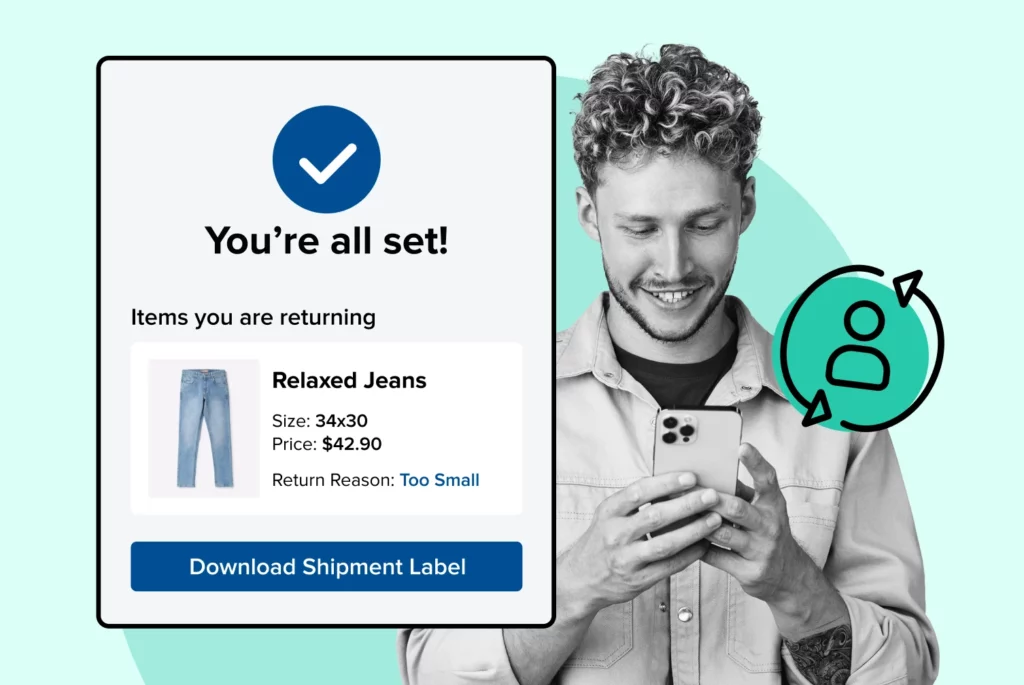
The Impact of Returns on Customer Retention
Explore the relationship between returns and customer loyalty: the importance of implementing strategic returns and retention practices.
Boost customer experience and reduce support tickets
Realtime order and shipment tracking
Proactive order and shipping notifications
Predictive pre-purchase estimated delivery dates
Self-Serivce branded order tracking
Effortless experience delivered
Make returns profitable and delight customers
Flexibility to define any return destinations & conditions
Simplify returns for your customers and team
Incentivize exchanges over returns
Returns management made easy for your team
Understand why your customers are returning
Unify the online and the in-store experience
Hassle-free pickup experience for customers
In-Store Dashboard to keep operations streamlined
In-Store and Online orders unified
Drive foot-traffic to your stores
Boost customer experience and reduce support tickets
Realtime order and shipment tracking
Proactive order and shipping notifications
Predictive pre-purchase estimated delivery dates
Self-Serivce branded order tracking
Effortless experience delivered
Make returns profitable and delight customers
Flexibility to define any return destinations & conditions
Simplify returns for your customers and team
Incentivize exchanges over returns
Returns management made easy for your team
Understand why your customers are returning
Unify the online and the in-store experience
Hassle-free pickup experience for customers
In-Store Dashboard to keep operations streamlined
In-Store and Online orders unified
Drive foot-traffic to your stores
Find the answer to all your questions
Explore the most comon questions about WeSupply
Calculate the ROI that WeSupply can bring you
Request a no strings attached review of your current shopping experience and missed conversion opportunities
Take a step by step trip through our functionality to see how we can improve your ecommerce processes.
Read actionable articles on how to optimize your post-purchase experience and decrease support tickets
Get inspired by stories of how our customers implemented an effortless post-purchase experience
A Deep Dive into Top Companies' Order Tracking & Returns Strategy
Wondering if WeSupply is a good fit for you? Read through our use cases to see how we can help you increase conversion & improve CX!

The world of e-commerce is fiercely competitive, and businesses are constantly seeking ways to outperform rivals and secure customer loyalty. However, many companies tend to focus heavily on customer acquisition, overlooking the significance of customer retention. In reality, retaining existing customers is far more cost-effective and beneficial for long-term sustainability in the e-commerce landscape. This article delves into the ultimate guide to customer churn ecommerce, presenting strategies to prevent churn, retain customers, and foster long-lasting customer loyalty.
Understanding customer retention is essential for e-commerce growth.
Strategies to reduce customer churn focus on analyzing factors driving it and creating targeted campaigns.
Leveraging data analytics, AI, machine learning and cultivating a retention-centric business culture are key steps to improve customer loyalty & satisfaction.
WeSupply combats e-commerce customer churn with return analytics and key metrics like CSAT and NPS. Its personalized returns center and loyalty incentives, such as instant store credit for exchanges, enhance customer loyalty and retention, boosting sales and fostering stronger customer relationships. Additionally, with email and SMS post-purchase notifications, keep your customers informed and engaged. Offer them personalized deals through these notifications to encourage repeat business.
Keeping present customers is a strategic move for running a B2C e-commerce business. It’s less expensive to retain customers than it is to acquire new ones from competitors. The longevity and growth of an e-commerce business often hinge on the successful execution of a customer retention strategy. The probability of obtaining business from dynamic clients in B2C e-commerce is estimated to be 60%. A strong customer support team can play a crucial role in retaining these clients.
The subsequent parts of this guide will examine:
Customer churn
Different types of churn
Contributing factors to churn
Approaches for preventing churn
Boosting customer engagement
Customer retention is essential for long-term sustainability in e-commerce, as it is more cost-effective to retain current customers than to acquire new ones. Here are some reasons why:
Repeat customers typically increase their spending over time
Retained customers offer valuable data and insights
Acquiring new customers can cost four to five times more than retaining existing customers.
Increasing customer retention by 5% can result in a profit increase of 25-95%. Monitoring customer churn rate is necessary to evaluate the success of retention strategies and to allocate resources effectively.
In e-commerce, customer churn is the rate at which customers cease to do business with an online store. Calculating customer churn rate is imperative for the sustained success of an e-commerce business and the excellence of its offerings. Analyzing ecommerce churn rate can assist e-commerce businesses in:
Pinpointing areas of improvement in the customer journey
Recognizing customers who may be likely to churn
Enabling the growth of a successful e-commerce business
Understanding customer churn and its effects enables businesses to tackle the reasons for churn more effectively and to apply strategies to keep their valuable customers.
Customer churn can be categorized into two primary types: voluntary and involuntary. Factors contributing to customer churn include:
A subpar shopping experience
Unaffordable pricing
High customer acquisition cost
Competitors providing better value
The following subsections will delve deeper into the types of customer churn and the factors that contribute to it, thereby offering a comprehensive understanding of the challenges e-commerce businesses face in keeping customers.
Voluntary churn in e-commerce is defined as a situation when a customer makes an active decision to discontinue their purchases from a brand or cancel their subscription or service. It is a deliberate decision taken by the customer, often due to dissatisfaction or other reasons. Involuntary churn, on the other hand, is caused by payment attempts that fail, resulting in the cancellation of the customer’s subscription or service. To reduce churn rates, businesses must address both voluntary and involuntary churn.
Typical causes of voluntary churn include:
The service not meeting the customer’s needs or wants
The customer perceiving that the service does not meet their expectations
Poor services or products
Competition
Inadequate customer service
Product quality, customer service, and competition are all factors that may influence customer turnover in e-commerce. Analyzing these contributing factors allows businesses to pinpoint areas for improvement and to proactively tackle customer concerns, thus reducing churn.
Ecommerce businesses, including ecommerce stores, can leverage business intelligence, enlist a dedicated logistics service provider, solicit customer feedback, monitor reviews, and craft engaging customer experiences at every touchpoint to prevent and retain customers.
WeSupply offers comprehensive return analytics to help businesses analyze factors contributing to customer churn. By enabling SKU-level analysis of return reasons, including quality, size, and color, it helps improve product offerings and streamline processes. It also emphasizes the importance of data-driven decisions in enhancing post-purchase customer experience, using tools to track metrics like CSAT and NPS. Understanding and addressing the root causes of issues, whether in product quality, order fulfillment, or customer service, WeSupply aids businesses in optimizing their operations and reducing churn. Additionally, it also provides detailed logistics analytics about all aspects of the eCommerce venture, allowing retailers to determine precisely which parts of the business are lacking, thereby ensuring they can take relevant action.
Keeping track and measuring the customer churn rate in e-commerce is necessary for assessing the effectiveness of customer retention strategies and making data-based decisions. The following subsections will focus on the key performance indicators (KPIs) related to churn rate and the impact of seasonal trends on customer churn rates. This will give a holistic understanding of the factors affecting customer retention in e-commerce.
Identifying KPIs related to churn rate, such as average order value and customer retention rate, is crucial for e-commerce businesses to gauge the effectiveness of their customer retention strategies and make data-driven decisions. By monitoring KPIs related to churn rate, companies can recognize trends, patterns, and potential causes of customer attrition, enabling them to take proactive steps to prevent churn, enhance customer satisfaction, and ultimately boost customer loyalty and revenue.
WeSupply emphasizes the critical role of analytics and data-driven decisions in reducing churn rates in businesses. Recognizing that improvement is impossible without tracking, WeSupply provides tools to monitor key performance indicators such as Customer Satisfaction (CSAT)and Net Promoter Score (NPS). These metrics are essential for understanding and enhancing the post-purchase customer experience, enabling businesses to fine-tune their services based on customer needs and preferences, and to identify and rectify any issues, whether in order fulfillment, product quality, or overall service.
Seasonal trends must be taken into account for accurate churn rate analysis. Businesses can analyze data from the past few years or examine the practices of established brands in their vertical to gain a better understanding of seasonal trends in churn rate. Some examples of seasonal trends that may influence customer churn rates in e-commerce include:
Seasonal alterations in customer buying habits
Seasonal necessity for particular products or services
The effect of holidays and festive shopping seasons on customer churn rates
Variations in customer base and total revenue due to seasonal churn
Higher churn rates for new customers compared to existing customers.
Data-driven strategies play a pivotal role in combating customer churn in e-commerce. The next subsections will focus on:
The significance of customer journey mapping
The role of analytics in the early detection of at-risk customers
The use of probabilistic models for predicting and preventing customer churn.
These strategies can help e-commerce businesses anticipate customer behavior, tailor their marketing efforts, and ultimately enhance customer loyalty and retention.
Customer journey mapping is a valuable tool for identifying churn risks and opportunities for improvement. It provides a visual representation of the customer journey from initial contact to purchase decision, allowing businesses to identify potential pain points, bottlenecks, and areas of dissatisfaction that may lead to customer churn. By mapping out the customer journey, businesses can gain insights into the customer experience, understand customer needs and expectations, and identify opportunities for improvement.
Consequently, this helps businesses to proactively address issues and implement strategies to retain customers and reduce churn.
Analytics can be employed to obtain a training data set by systematically sampling an equal number of lost and non-lost clients. This data set can then be used to identify relevant KPIs related to churn rate, thereby facilitating the early detection of at-risk customers.
Analytics can also help businesses uncover the key drivers of customer churn, allowing them to implement targeted retention strategies and incentives to retain at-risk customers and prevent customer attrition.
WeSupply utilizes return analytics to identify customers at risk of churn, analyzing factors such as product size and quality to enhance business offerings. It tracks crucial metrics like CSAT and NPS for early problem resolution. Additionally, its Order Flow Logistics Analytics offers a comprehensive overview of the order process, including received, shipped, canceled, and delivered orders, plus details on transit statuses and processing times. This data-driven approach helps in refining the end-to-end customer experience and reducing churn effectively.
Simplify returns for your customers and support team
Book a quick call with our experts to see how WeSupply can help you make returns easy for your customers with a beautiful, self-service solution that makes their experience easier while also providing new ways to lower costs and earn back revenue.
Probabilistic models can be utilized to forecast customer churn by examining customer behavior and recognizing patterns that suggest a customer is likely to churn. This data can then be utilized to devise focused retention strategies and incentives to avert customer churn.
Probabilistic models can be beneficial in predicting customer churn by:
Helping businesses identify customers who are at higher risk of churning
Taking proactive measures to retain them
Saving time and resources by focusing on customers who are most likely to churn and taking steps to prevent it.
Tactical approaches to enhance customer experience and prevent churn include personalization, customer feedback, and loyalty programs. The next subsections will delve into these strategies and evaluate their efficacy in elevating customer satisfaction, fostering loyalty, and reducing churn rates in e-commerce.
Personalization is a process of tailoring customer experiences to meet individual needs and preferences. It can reduce churn rate in e-commerce by:
Understanding customers on a personal level
Providing personalized experiences
Fostering customer loyalty and trust
Increasing customer retention rates
Creating customized shopping experiences.
Personalization is essential for customer engagement, as it facilitates the development of a more profound connection with customers, which can result in increased customer engagement, loyalty, and higher customer retention rates.
WeSupply enhances e-commerce customer engagement by offering a personalized, self-service Returns Center with a fully branded portal. This platform allows businesses to create a customized, omnichannel journey, avoiding generic experiences. Features include tailor-made tracking pages, branded email, and SMS notifications, all customizable to align with brand aesthetics. This approach not only streamlines the post-purchase experience but also reinforces customer loyalty by maintaining a consistent brand experience from purchase to return, integrating opportunities for continued engagement and revenue generation.
Customer feedback is imperative for gaining insight into customer requirements and preferences, which can aid businesses in optimizing their retention tactics. By collecting customer feedback through various methods such as:
Surveys
Emails
Interviews and focus groups
Social media
Website analytics
Free-text feedback
Businesses can make improvements based on customer insights and take appropriate action to enhance customer satisfaction, build trust, and foster customer loyalty.
Monitoring the results of the changes and refining the strategies based on customer feedback is essential for the success of e-commerce businesses.
WeSupply plays a crucial role in maximizing customer feedback for retention optimization by enabling businesses to gather comprehensive data on return reasons. This system allows for the collection of product images and detailed customer feedback, streamlining the information gathering process that typically requires extensive back-and-forth communication. Additionally, WeSupply’s functionality includes asking customers for proof, helping to prevent return fraud or abuse, thus ensuring more accurate and valuable customer insights for retention strategies.
Loyalty programs and incentives play a significant role in reducing customer churn and encouraging repeat purchases. Implementing long-term subscription services can be an effective approach to increasing customer retention, as it allows customers to become familiar with the business and its offerings, while also providing the business with the opportunity to enhance its products.
Offering discounts, upgrades, free promo codes, and loyalty rewards are effective methods to incentivize customers to keep returning and maintain brand loyalty.
WeSupply aids in implementing loyalty programs and incentives for churn reduction by encouraging exchanges over returns. It offers instant store credit as a reward for customers who opt for credit instead of refunds, directing them back to the product catalog to continue shopping. This approach not only saves sales but also boosts the average order value. By automatically issuing refunds as store credits, gift cards, or coupon codes, WeSupply entices customers to return and shop more, fostering a trusting relationship.
Convert returns into exchanges
Book a quick call with our experts to see how WeSupply can help you make exchanges easy for the customer by sending them back to your website where they can shop for any product regardless of product price.
Keeping customers engaged beyond the purchase is vital for customer retention and long-term success in e-commerce. The next subsections will examine how customer segmentation for targeted retention campaigns and creating engaging customer experiences at every touchpoint can assist businesses in retaining customers and fostering loyalty.
Segmenting customers for targeted retention campaigns has multiple advantages, such as:
Enhanced targeting
Targeted communication
Increased competitiveness
Increased ROI
Strengthened brand identity.
By analyzing factors such as:
the frequency of purchases
average order value
product preferences
brand loyalty
engagement with marketing campaigns
Businesses can tailor their marketing strategies and retention campaigns to effectively target and retain specific customer segments.
Creating engaging customer experiences at every touchpoint involves providing customers with a unified and personalized experience throughout their journey, from initial contact to purchase decision. This includes:
Supplying relevant content
Personalized emails
Interactive chatbots
Other features that engage customers and foster trust
By focusing on each touchpoint and ensuring a positive experience, businesses can enhance customer satisfaction, build loyalty, and increase customer retention.
Adapting to churn trends requires businesses to monitor churn in real-time and adjust their strategies based on changing customer behavior.
The next subsections will focus on the significance of real-time churn monitoring and adaptive strategies in managing customer churn and promoting the long-term success of e-commerce.
Real-time monitoring of churn and adaptive strategies involves the continuous tracking and analysis of customer behavior and engagement to identify potential churn indicators in a timely manner. Data analytics and machine learning techniques are used to detect patterns and trends that may suggest a customer is at risk of leaving the business.
By monitoring churn in real-time, e-commerce businesses can take proactive measures to prevent customer attrition and implement adaptive strategies to retain customers.
The future of customer retention and churn analysis involves innovations in AI and machine learning, as well as the need for a retention-centric business culture.
The upcoming subsections will focus on the recent advancements in AI and machine learning for predictive churn analysis and the necessity of fostering a retention-focused business culture for the long-term success of e-commerce.
AI and machine learning play a pivotal role in predictive churn analysis in e-commerce. These technologies leverage vast amounts of data to extract valuable insights and predict consumer behavior. By analyzing customer churn, patterns and trends can be identified that are associated with customer attrition, enabling businesses to take proactive steps to prevent it.
Machine learning algorithms are used to forecast customer churn rates, classify customers based on their likelihood to churn, and implement targeted retention strategies.
Cultivating a retention-centric business culture is a customer-centric environment that emphasizes putting the customer at the core of business decisions and strategies. This approach leads to increased loyalty, higher customer satisfaction, and ultimately, improved customer retention rates.
By prioritizing customer retention and long-term success, subscription based ecommerce businesses can optimize their operations, maximize customer lifetime value, and achieve sustainable growth in the competitive e-commerce landscape.
To sum up, comprehending customer churn and its influence on e-commerce success is vital for businesses aiming to prosper in the current competitive environment. By applying data-driven strategies, keeping customers engaged beyond the purchase, and adjusting to churn trends, e-commerce businesses can optimize their retention strategies and cultivate enduring customer loyalty.
As the future of customer retention and churn analysis continues to evolve, businesses must stay ahead of the curve by leveraging innovations in AI, machine learning, and cultivating a retention-centric business culture.
Understanding customer churn is of great importance, as it directly impacts the size of the customer base and customer lifetime value. By comprehending churn, businesses can recognize the reasons why customers cease purchasing from them and take proactive steps to prevent it.
A low churn rate indicates that marketing activities are successfully retaining the target audience. In conclusion, understanding churn assists in enhancing customer satisfaction, loyalty, and retention in e-commerce.
A comprehensive checklist for crafting an effective e-commerce retention strategy includes:
Gaining an understanding of customer churn and its effect on business performance
Analyzing customer data to recognize patterns and trends
Segmenting customers for targeted retention campaigns
Providing engaging customer experiences at each touchpoint
Utilizing analytics for early detection of at-risk customers, deploying probabilistic models to predict and prevent customer churn, instituting loyalty programs and incentives for churn reduction, and engaging customers beyond the purchase.
In summary, the ultimate guide to customer churn in e-commerce provides valuable insights into the importance of customer retention for long-term sustainability and growth. By delving into the nature of customer churn, measuring and monitoring churn rates, implementing data-driven strategies, and engaging customers beyond the purchase, e-commerce businesses can optimize their customer retention strategies and foster customer loyalty. As the future of customer retention and churn analysis evolves, businesses must stay ahead by leveraging innovations in AI, machine learning, and cultivating a retention-centric business culture.
WeSupply is a versatile post-purchase platform that significantly enhances customer satisfaction and reduces churn in e-commerce. It provides in-depth return analytics and tracks key satisfaction metrics like CSAT and NPS to refine the overall shopping experience. Its personalized returns center, coupled with effective loyalty programs like instant store credits, fosters customer loyalty and encourages repeat purchases. Additionally, WeSupply offers comprehensive logistics analytics, covering all aspects of the order process, ensuring a smooth and satisfying end-to-end customer journey.
eCommerce customer churn is the percentage of customers who discontinue doing business with your online store over a predetermined period.
A good churn rate for eCommerce companies is usually considered anything below 5%, although some enterprise companies might experience rates of up to 10% and still consider them successful.
To calculate customer churn rate in eCommerce, subtract the number of customers at the end of a given period from the number of customers at the start of the period. Then, divide that number by the total customers at the start of the period and multiply by 100.
For subscription businesses, a 3% monthly churn rate is generally seen as good. However, the specific rate that is considered ideal for any given business will depend on market and industry trends.
Customer churn in e-commerce is often attributed to a subpar shopping experience, unaffordable pricing, high customer acquisition cost, and superior value offered by competitors.
WeSupply minimizes e-commerce customer churn by offering detailed return analytics, tracking CSAT and NPS metrics, and providing a personalized returns center. Its convert returns to exchange and comprehensive logistics analytics ensure a smooth, satisfying customer journey, fostering repeat purchases and enhanced satisfaction.

Learn How To Create Successful Post Purchase Email Campaigns
Build an effective post-purchase email flow that helps you increase customer satisfaction and drive revenue growth!

Explore the relationship between returns and customer loyalty: the importance of implementing strategic returns and retention practices.

Let’s explore how you can harness the power of return notification emails to enhance customer journeys and boost your e-commerce success.
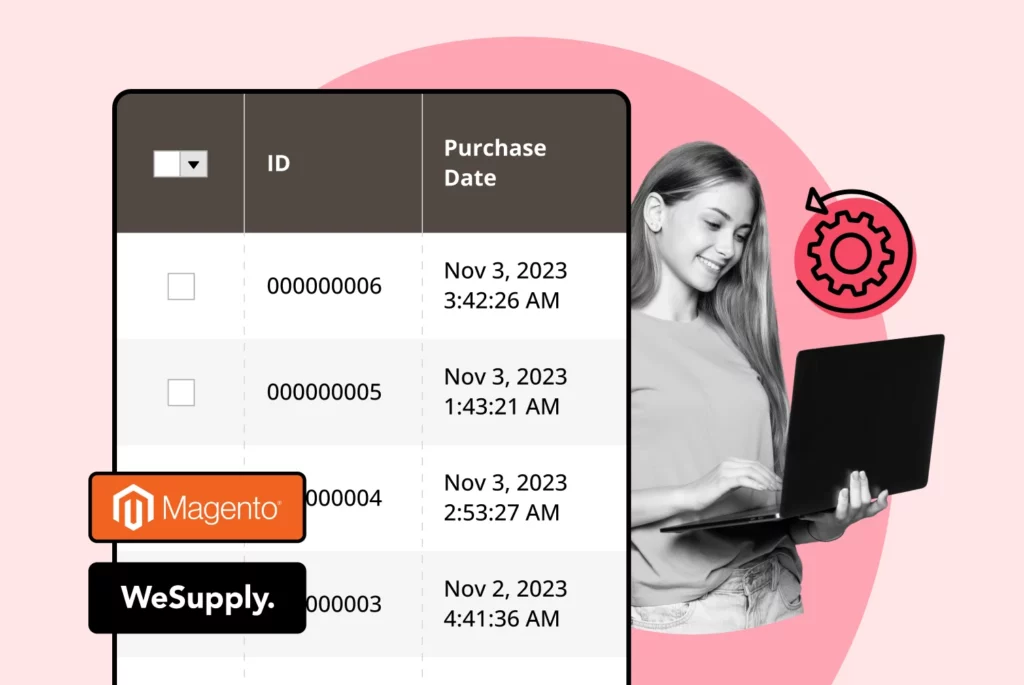
Enhanced customer satisfaction, increased efficiency, and business growth. Unlock the full potential of automation for your Magento store!
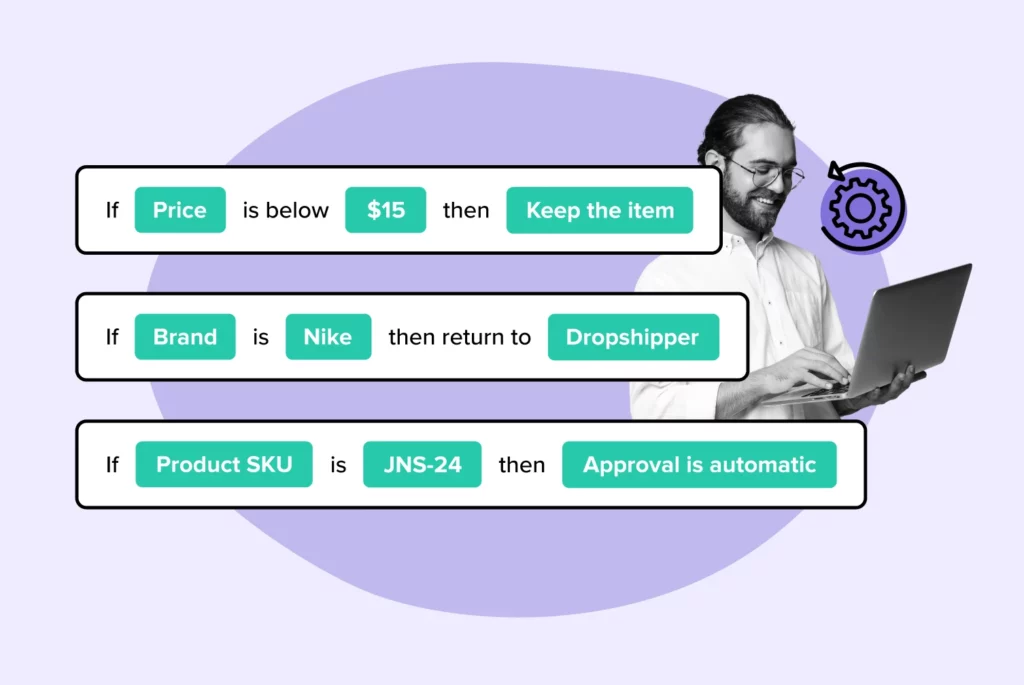
Discover the world of return automation rules: their transformative power, types, advantages, and best practices for implementation.

Discover how Return Merchandise Authorization (RMA) automation has led to improved efficiency, customer experience, and overall growth.
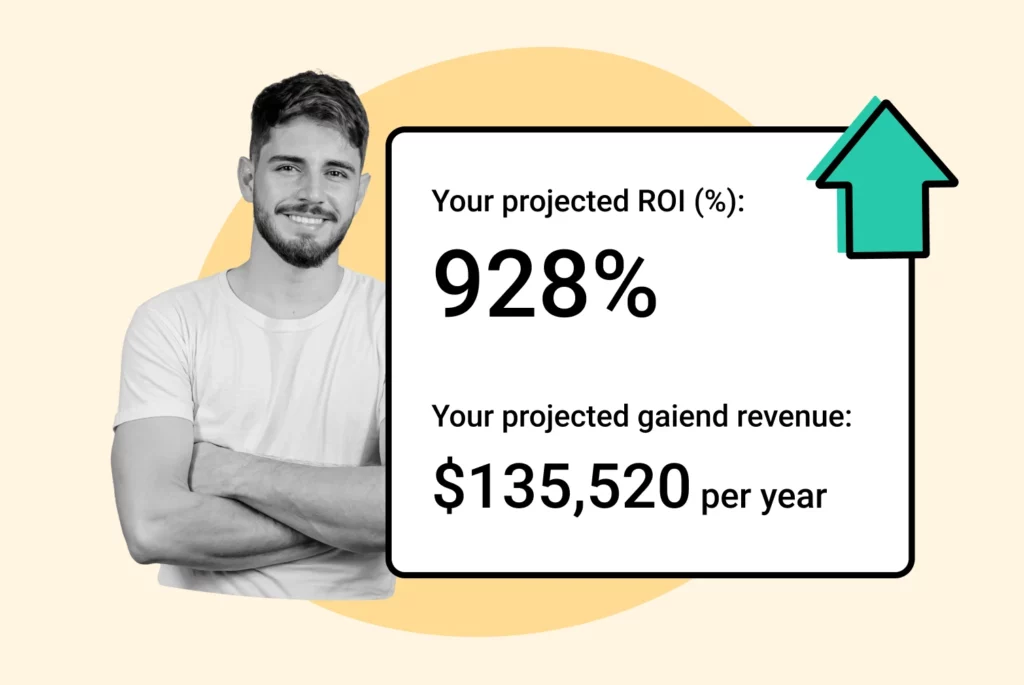
Automated returns process: streamline operations, reduce costs, enhance customer satisfaction, and boost ROI returns automation.

Explore the importance of returns automation ecommerce, the key components of an automated returns system, and real-life success stories.
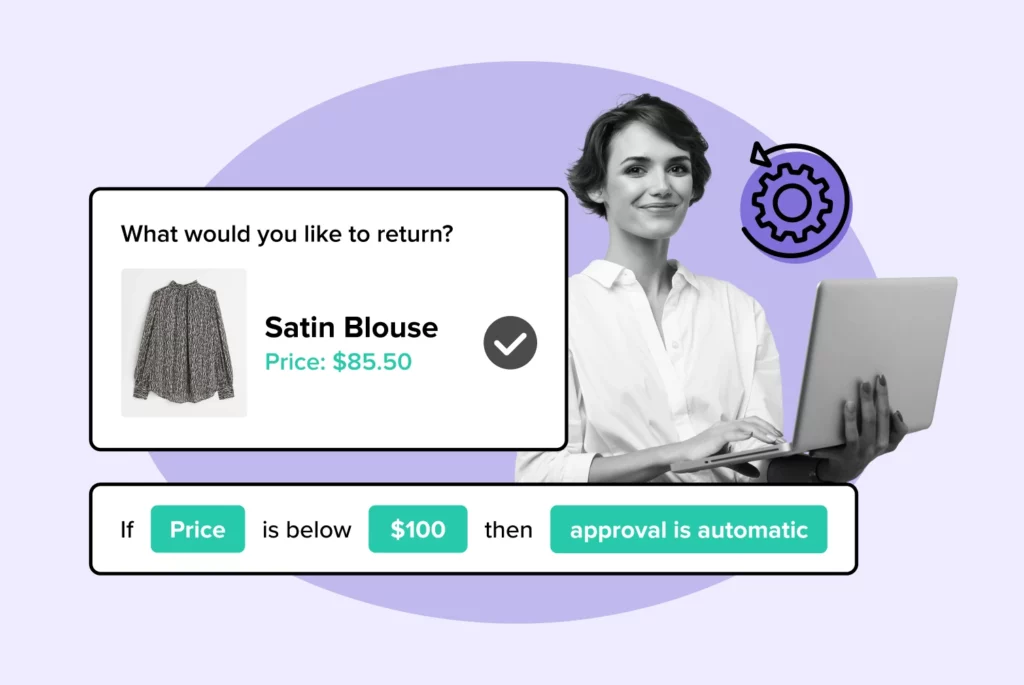
Discover how automated returns management can deliver increased customer satisfaction, operational efficiency, and sustainability!
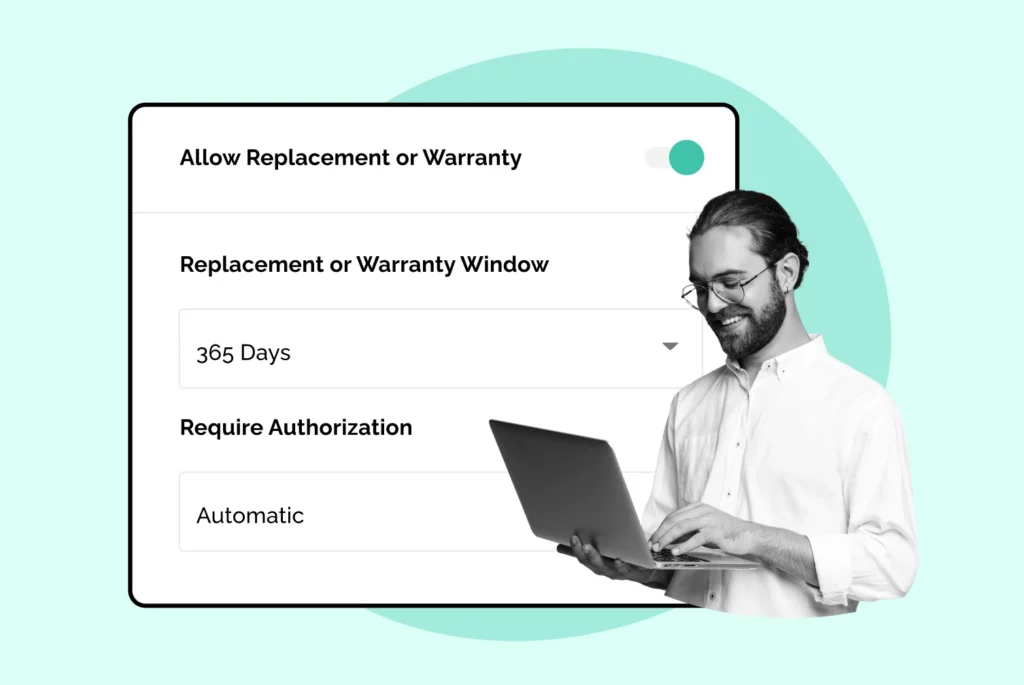
Explore the power of automation in warranty management and unlock its potential for your eCommerce business.